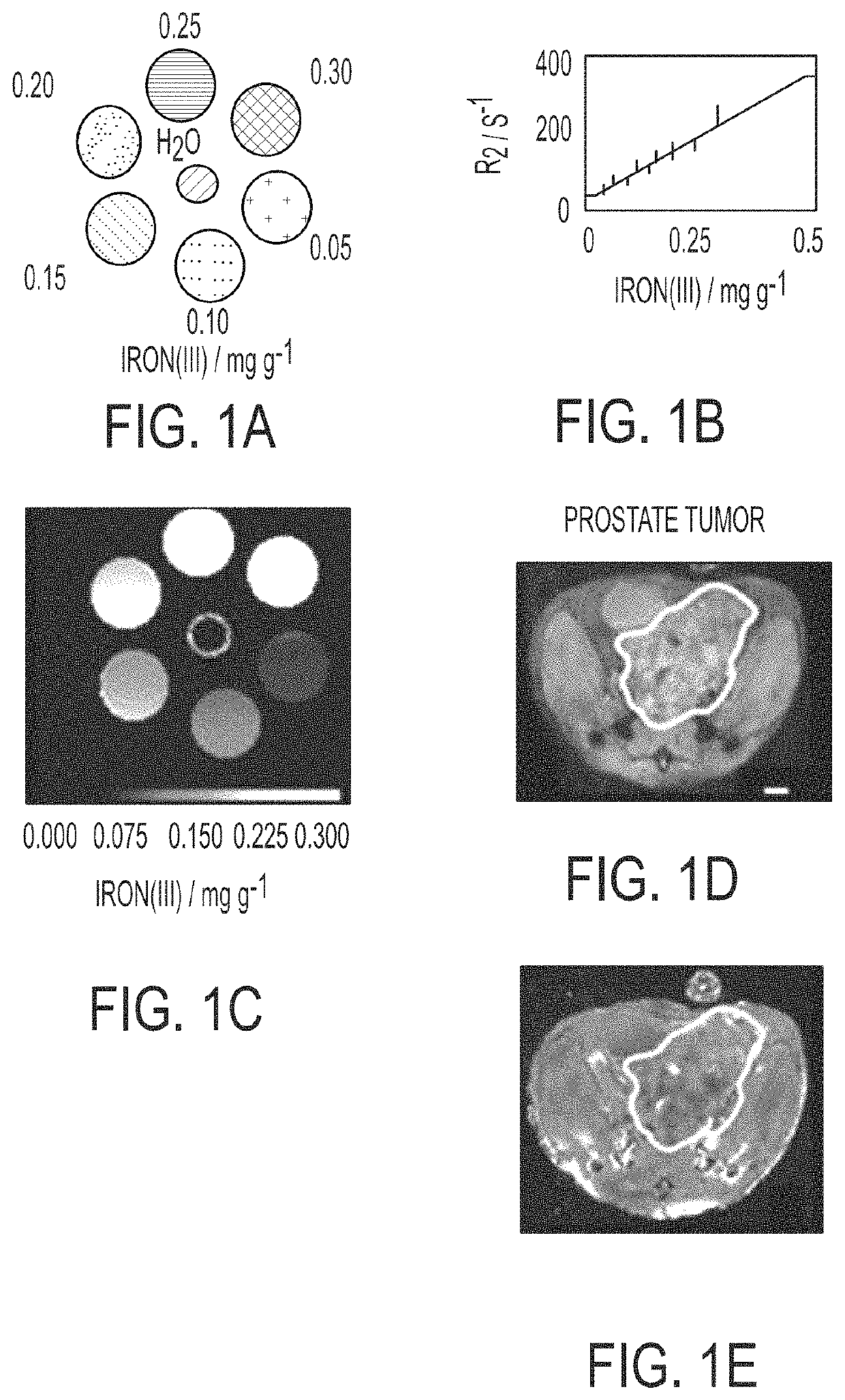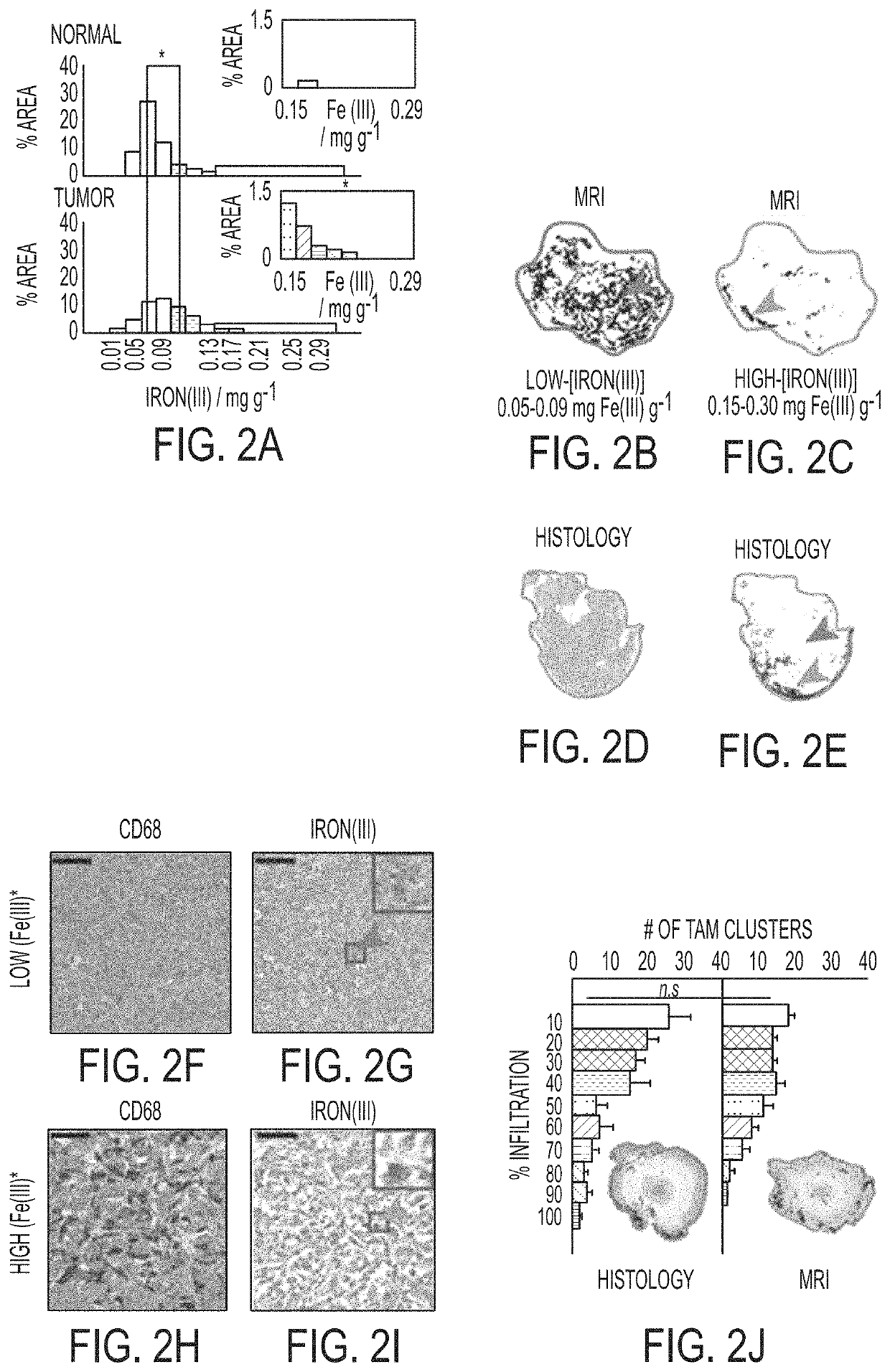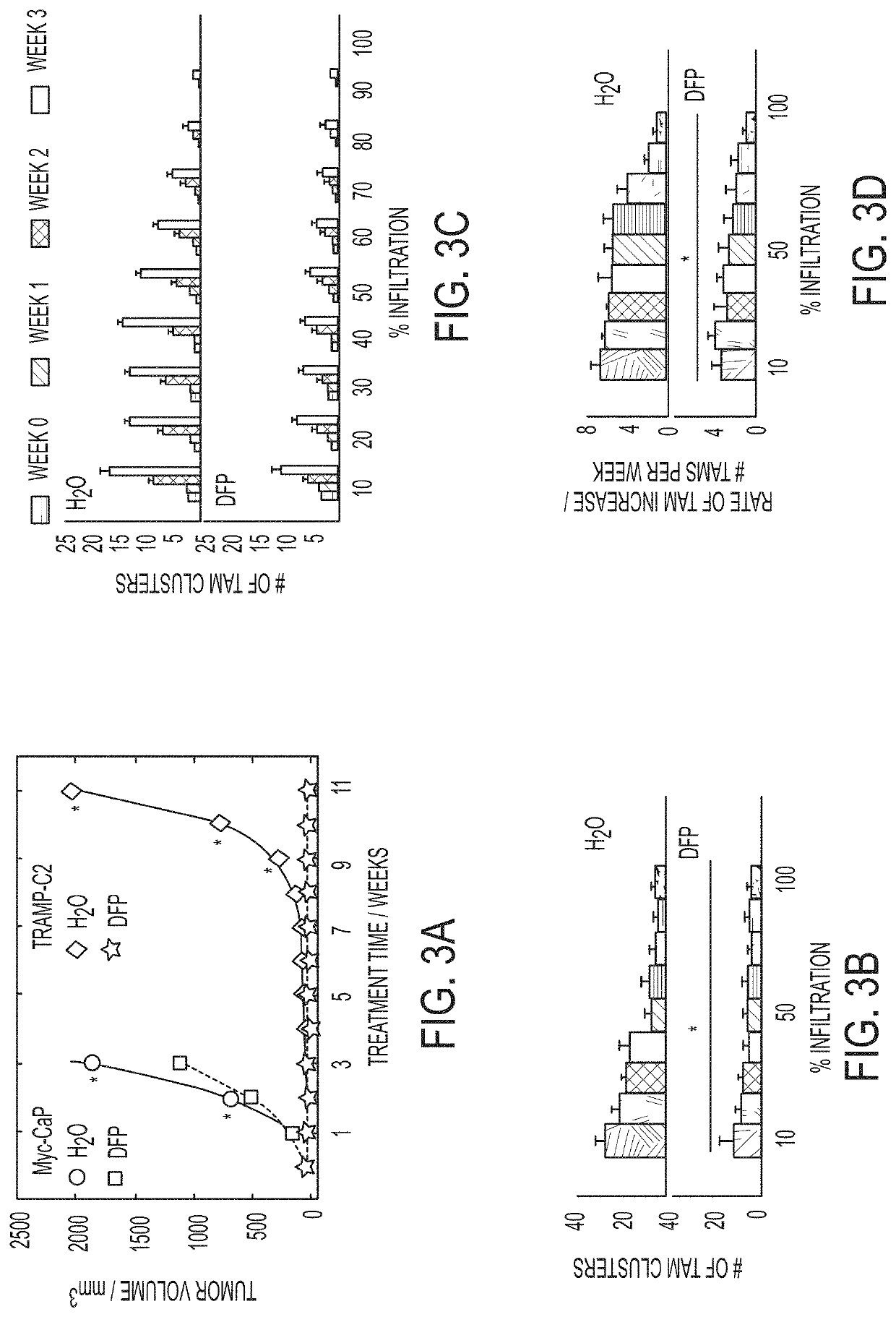Innate metabolic imaging of cellular systems
a metabolic imaging and cellular system technology, applied in the field of image processing techniques, can solve the problems of current ability to non-invasively, critical gap in the understanding of immune responses, and bias in the measurement of tam infiltration
- Summary
- Abstract
- Description
- Claims
- Application Information
AI Technical Summary
Benefits of technology
Problems solved by technology
Method used
Image
Examples
experiment b
AM Infiltration during Prostate Cancer Therapy
[0092]Preliminary data presented below indicates that FeMRI and histology can be used in combination with iron chelation therapy to monitor reductions in TAM infiltration that coincide with significant inhibition of prostate tumor growth in immune competent orthotopic models. This therapeutic effect resembles macrophage depletion caused by immune therapies such as CSF1R inhibition that also have succeeded in reducing tumor growth, and sensitize tumors to radiation. Thus, FeMRT and histology can be used to monitor TAM infiltration during (1) radiation, (2) CSF1R targeted immune therapy, and (3) iron chelation. Without wishing to be bound to any particular theory, it is believed that depletion of TAMs by immune therapy and chelation will inhibit tumor growth and sensitize tumors to radiation. The biomarker potential of TAM infiltration can lead to improved predictions of therapeutic response using a highly translatable combination of FeMRT...
PUM
 Login to View More
Login to View More Abstract
Description
Claims
Application Information
 Login to View More
Login to View More - R&D
- Intellectual Property
- Life Sciences
- Materials
- Tech Scout
- Unparalleled Data Quality
- Higher Quality Content
- 60% Fewer Hallucinations
Browse by: Latest US Patents, China's latest patents, Technical Efficacy Thesaurus, Application Domain, Technology Topic, Popular Technical Reports.
© 2025 PatSnap. All rights reserved.Legal|Privacy policy|Modern Slavery Act Transparency Statement|Sitemap|About US| Contact US: help@patsnap.com



